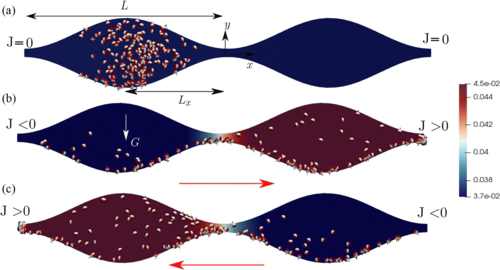<< A nonconservative system with nonreciprocal interaction has been found to reveal exotic features where sudden phase transitions can occur. >>️
Here AA reported << the emanation of a chimera in a network of Stuart-Landau oscillators. >>
<< The findings could have pragmatic implications in the areas of active matter, networks, and photonics. >>
️
M. Paul Asir. Emergence of chimeras: An impetus by exceptional points. Phys. Rev. E 108, 024220. Aug 22, 2023.
Also: Stuart–Landau equation.
Also: network, transition, chimera, chaos, in: https://www.inkgmr.net/kwrds.html
Keywords: network, transition, chimera, chaos, pattern formation





